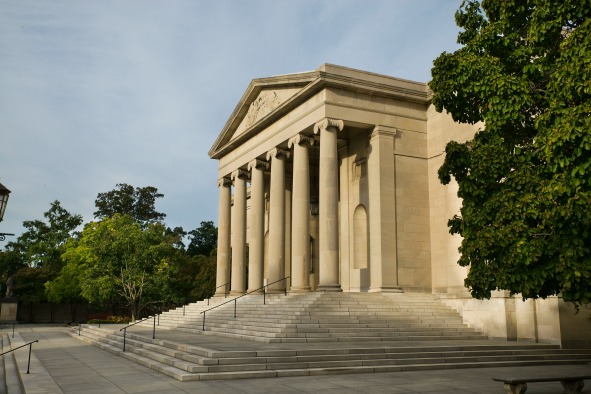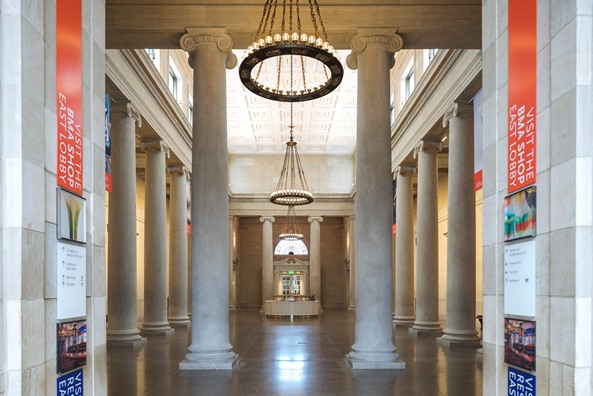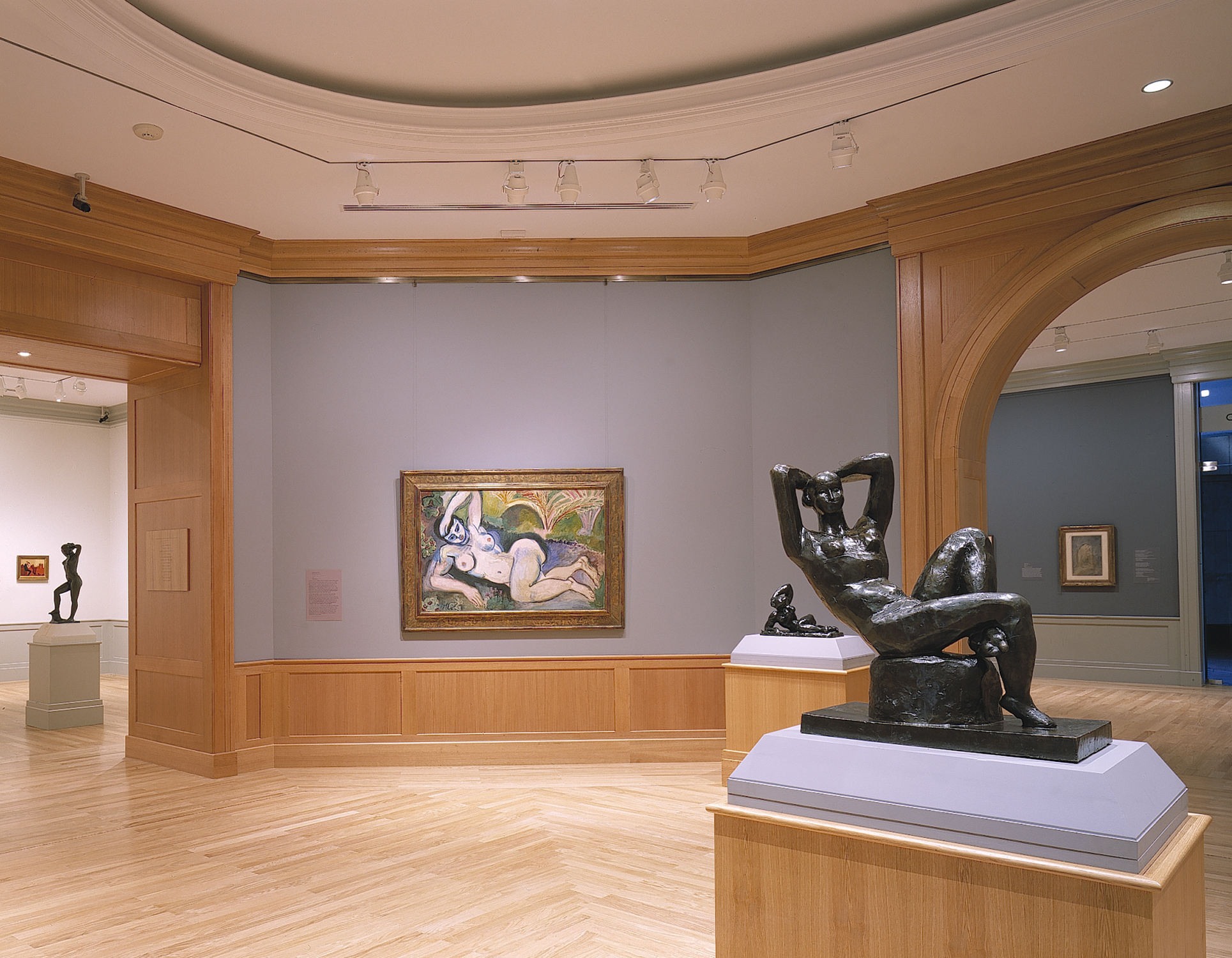If absence makes the heart grow fonder, it could be that drab, desolate realities make art grow brighter. In Baltimore, this may be part of what gives the Museum of Art its special sheen, as the city still fights to shake off its mega post-industrial hangover.

The classical architecture of the Baltimore Museum of Art (Photo: The Baltimore Museum of Art)
However, “Charm City” does still retain significant pockets of it. Adjacent to the pleasantly colonial and green campus of John Hopkins University and Charles Village streets known for their “painted ladies”—brightly colored Victorian rowhomes—the Baltimore Museum of Art can arguably claim the greatest amount in the city, with a collection to match any major museum in the world. As the museum’s Anne Mannix-Brown pointed out to me during my visit in late March, “The Baltimore Museum of Art’s founders believed that a great city deserved a great art museum.” As my own tour quickly revealed, Baltimore indeed got one.
Opened on the eve of the Great Depression, the Roman-style temple is probably one of the few things in the city that has steadily grown in stature throughout the following decades, adding the impressive Cone Collection in 1949; which brought a swath of works by Matisse, Picasso, Pissarro, Courbet, and Degas; the Wurtzburger Sculpture Garden in 1980; the adjoining Levi Sculpture Garden in 1988; and an entirely new West Wing in 1994. Two decades later, the Merrick Historic Entrance reopened after 30 years of renovation.
In fact, it’s through here I entered the temple-like Fox Court, girded in tall, white ionic columns and entrances to galleries for American and Maryland-based art. When finished with those, pass through the opening on the far side into the Antioch Court, where Roman mosaics from the 1st to 6th centuries (unearthed in Antioch with the help of the BMA in the 1930s) clarify in the sunlight coming through the arched windows.

The Fox Court (Photo: The Baltimore Museum of Art)
From here, any direction takes you to a new range of galleries and genres. To the east (well, northeast), nine burgundy red galleries with herringbone wood floors and neoclassical motifs display classics of medieval and Renaissance European art, including Rembrandt van Rijn’s painting Titus, the Artist’s Son; Titian’s Portrait of a Gentleman; Louise Élisabeth Vigée-Lebrun’s Princess Anna Alexandrovna Galitzin; as well as sculptures by Rodin and etchings by Dürer.
North of these lay another range of rooms running east-west for special exhibitions, impressive in their diversity, changing room to room, from textiles, paintings, photography, and film to thematic shows involving all of them.
But it’s not until you step into the rooms of the Cone Collection, west of the courtyard, that the artwork truly bowls you over. Amassed by Baltimore sisters and globetrotting bon vivants Claribel and Etta Cone, who befriended the likes of Picasso, Matisse, and other “up-and-coming” artists of the age, the Cone Collection became one of the world’s most important art collections. Upon Etta’s death in 1949, it was bequeathed to the Baltimore Museum of Art, where it now forms the centerpiece of the experience.

The Cone Wing (Photo: The Baltimore Museum of Art)
And it should be, as each swivel of the head reveals one astounding painting and sculpture after another: Paul Gauguin’s Woman of the Mango, Pablo Picasso’s Mother and Child, Vincent van Gogh’s A Pair of Boots, Joan Miro’s Birds in the Night, Cézanne’s late Bathers, plus bronzes of Degas’ famous ballerinas.
But it’s Matisse that launches the experience into the stratosphere. With approximately 1,100 works—the largest collection in the world—it’s easy to immerse yourself into the bright, joyful, and fauvist world that marks so much of the French painter’s work. Life is beautiful in the paintings, scenting the room with the painter’s philosophy: “What I dream of is an art of balance,” he once explained, “of purity and serenity devoid of troubling or depressing subject matter—a soothing, calming influence on the mind, rather like a good armchair which provides relaxation from physical fatigue.”
Even if your knees are beginning to wear thin from covering so much ground on the museum floors, works like Purple Robe and Anemones, Large reclining nude 28, Seated Odalisque, Left Knee Bent, and Interior with Dog, revive as you rove. In fact, the saturation of spiritual pleasure is so complete that it’s probably best to save the Cone Collection until the end, as the post-coital-esque bliss makes the further rooms of Contemporary art, African, Asian, and “English Sport” seem somewhat of a let-down.
For the same reason, it may be best to save the museum until the end of your Baltimore visit. With possibly the exception of a stroll along the harbor and the cobbled Fells Point waterfront, the museum outshines much of the rest of the city—enough that if you stopped no other place in Baltimore, it would be well worth the three-hour drive from New York City and expense in gas. Like the artwork inside, a visit to the Baltimore Museum of Art is priceless.
The Baltimore Museum of Art: https://artbma.org/